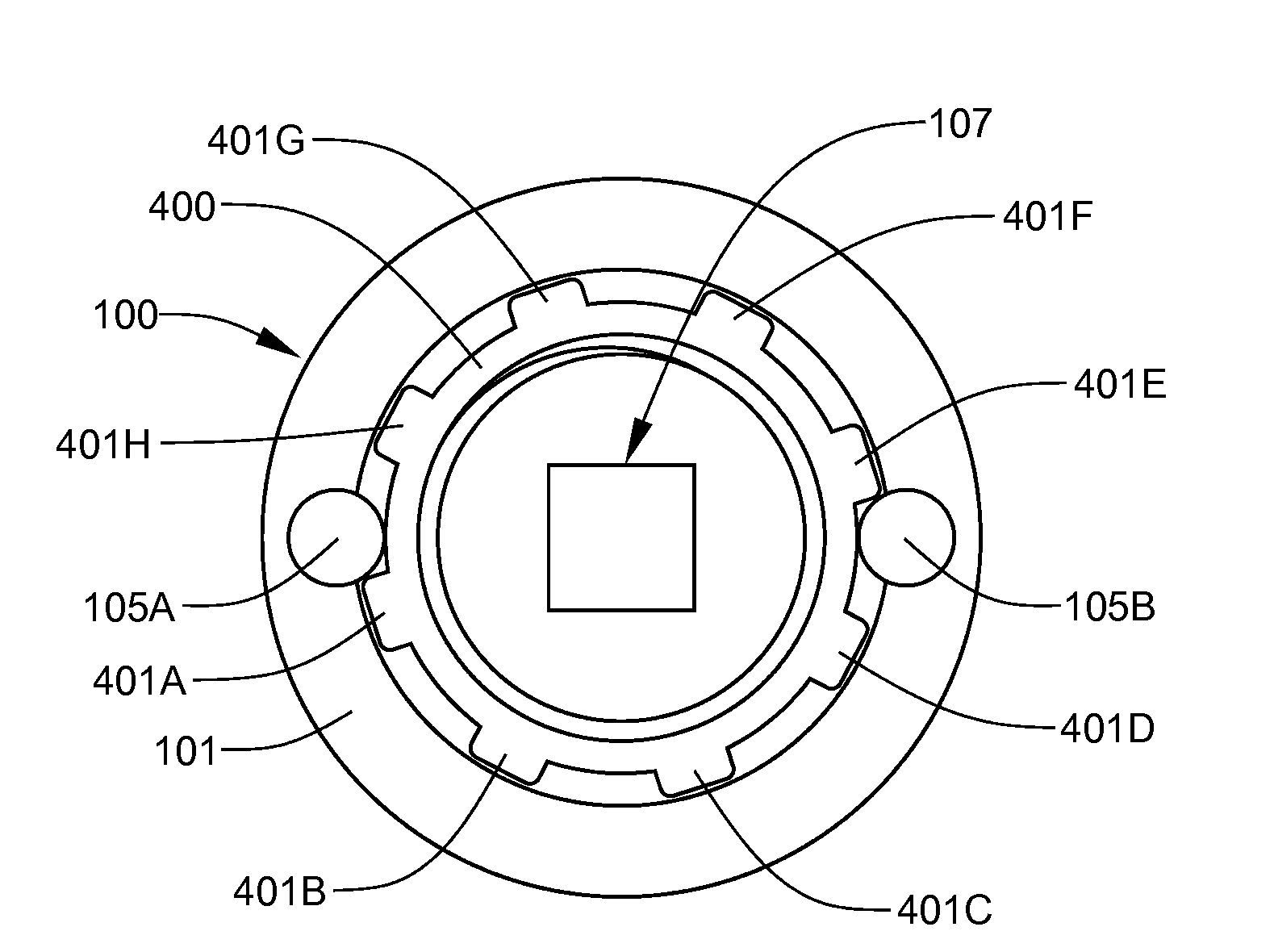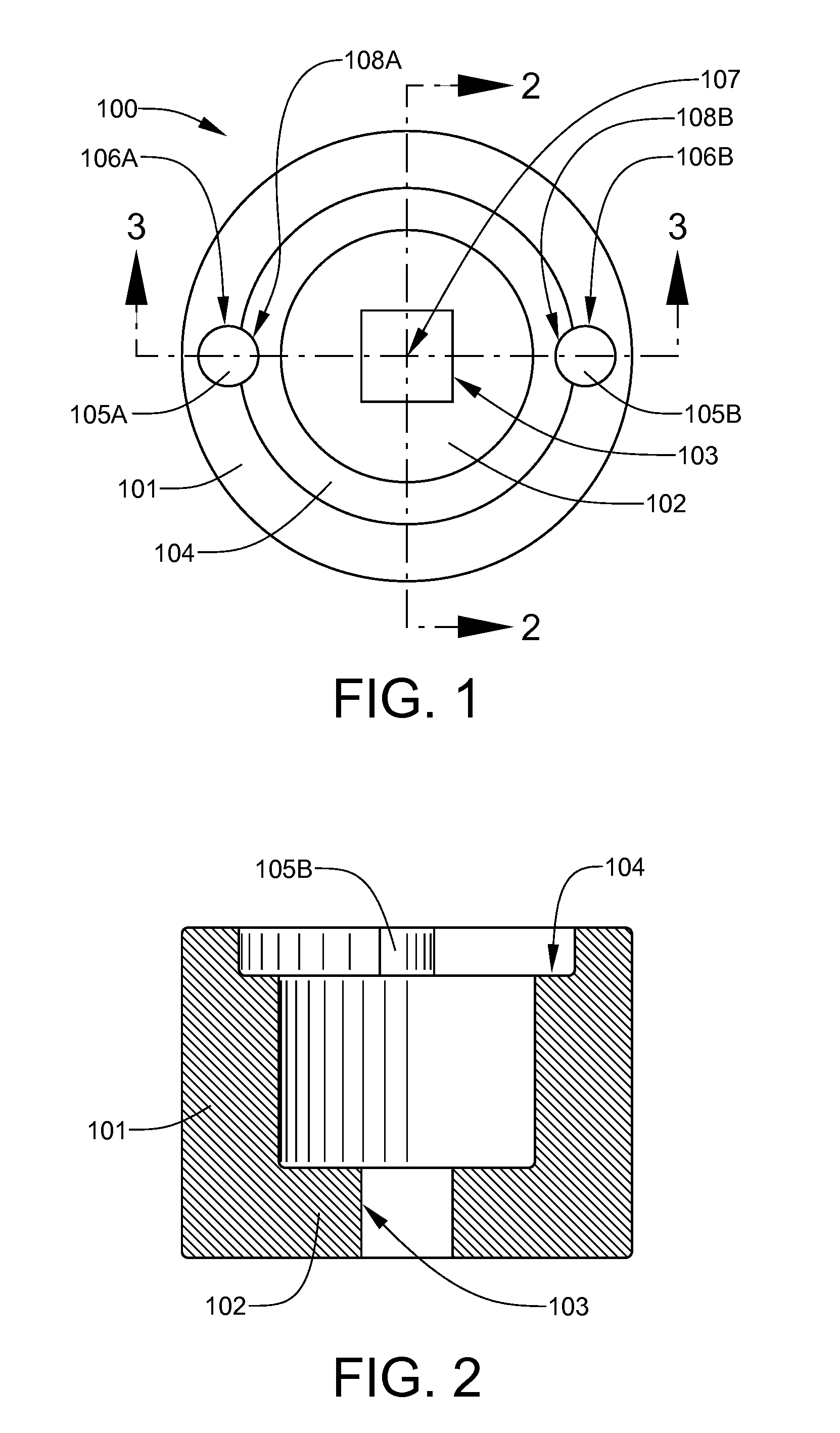Socket for electrical conduit locknuts
a technology for electrical conduits and sockets, which is applied in the field of sockets, can solve the problems of difficult to estimate the torque applied to the locknut, insufficient tightening, and manual manipulation of the locknut, and achieve the effect of reducing manufacturing costs, facilitating machined, and simplifying the locknu
- Summary
- Abstract
- Description
- Claims
- Application Information
AI Technical Summary
Benefits of technology
Problems solved by technology
Method used
Image
Examples
Embodiment Construction
[0030]The present invention provides a socket wrench for electrical locknuts that is highly tolerant of size differences of electrical locknuts of a nominal size and the number and spacing of lugs thereon.
[0031]Referring now to FIG. 1, a first embodiment socket wrench 100 for electrical locknuts is seen in a bottom view. The first embodiment socket wrench 100 is assembled from three separate pieces which are joined together. A thickened cylindrical wall 101 is used that is also unitary with a socket ceiling 102 having a square drive aperture 103 centered therein. An inner annular shoulder 104 is cut in the thickened cylindrical wall 101, and identical cylindrical pins 105A and 105B are installed in diametrically-opposed holes 106A and 106B, respectively, which are drilled parallel to the axis 107 of the cylindrical wall 101. The cylindrical pins 105A and 105B are then installed within the diametrically-opposed holes 106A and 106B, respectively, so that semi-cylindrical vertical proj...
PUM
 Login to View More
Login to View More Abstract
Description
Claims
Application Information
 Login to View More
Login to View More - R&D
- Intellectual Property
- Life Sciences
- Materials
- Tech Scout
- Unparalleled Data Quality
- Higher Quality Content
- 60% Fewer Hallucinations
Browse by: Latest US Patents, China's latest patents, Technical Efficacy Thesaurus, Application Domain, Technology Topic, Popular Technical Reports.
© 2025 PatSnap. All rights reserved.Legal|Privacy policy|Modern Slavery Act Transparency Statement|Sitemap|About US| Contact US: help@patsnap.com



